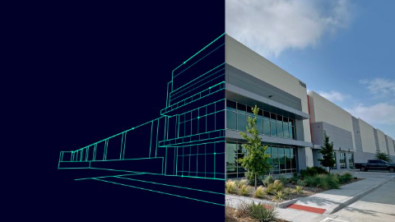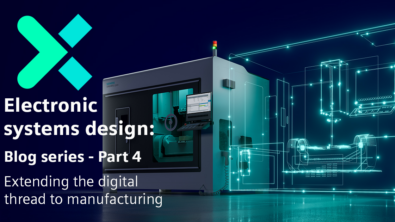Digital transformation, what is it, and why do we need it?

According to Wikipedia, “Digital Transformation is the adoption of digital technology to transform services or businesses, through replacing non-digital or manual processes with digital processes or replacing older digital technology with newer digital technology.” Businesses know there is a strong connection between digitalization maturity and financial performance. And, they’ve come to understand that the real impact of digitalization on their financial performance comes from improvements in efficiency, profitability, product quality, and on-time deliveries. But as companies begin to dive more into the details, it gets a bit tricky when each business has to figure out where and how to start this transformation.
It’s not just about using the latest technology
Many outside influences can drive digital transformation in your business or your market. It can force companies to make changes based on the latest technologies, competitors, or trends. But any fundamental shift should always align with business goals. And a successful digital transformation strategy is going to remain driven by those goals. An essential element of digital transformation is technology. But it’s often more about replacing outdated processes and legacy technology and traditional methods than about adopting new technology. It’s about innovation.
The design status quo
One area for companies to start is in the division we find in design. Designing a new product is challenging because most high-tech companies still use different and nonintegrated processes to coordinate their product development. There are separate teams for mechanical, electrical/electronic (E/E) and software development. Most design teams are already tackling the divide between the electrical and mechanical phases of design. Now adding software design to this already divided landscape becomes even more complicated. Design teams must manage potentially millions of artifacts associated with the constant change of software development. And each must work with the continually changing product requirements related to it.
Solving the age-old design challenges
A nonintegrated approach to design adds costs and risks that result in delays, design re-spins and ultimately impact time to market (TTM). An example of this is reconciling data across disciplines for a complete product (such as ECAD/MCAD co-design, requirements including software, test cases, defects and change orders) so it becomes a manual process. That means the process becomes difficult to track, often resulting in errors that can delay overall product development and release. The applications and tools bolted to existing approaches do not provide all stakeholders with full visibility into design files and data. That leaves companies to invest additional time in figuring out ways to solve this problem. The result is often the integration of newer technology into an aging and inefficient process. And, it still doesn’t successfully remove all the manual steps to move and translate data between tools.
Digitally transform your business with collaborative engineering tools
Today’s products are changing faster than ever before, and innovations and technologies continuously drive and accelerate those changes. Smarter, connected, adaptable products are far more complex to design, engineer and manufacture, and require a collaborative engineering approach to be successful. Too often, members of a product team are segregated by tools and software, increasing risk, errors, and frustration. A seamless, data-driven digital transformation can enable and accelerate how companies create products that fundamentally change our lives. Download the new eBook to learn more!
The benefits of a robust collaborative environment
The benefits of product lifecycle management (PLM) software are a vital driver of digitalization for product developers and manufacturers. Electronics businesses of all sizes choose integrated lifecycle management as their core of digital transformation to innovate and leverage the most comprehensive digital twin. Siemens is honored and appreciative to be recognized by Forrester Research as a PLM software leader in The Forrester Wave™: Product Lifecycle Management for Discrete Manufacturers, Q1 2021 report.
An integrated PLM system that includes application lifecycle management (ALM) enables users to collaborate on all product data, including specification, intellectual property, validation, verification information. With all electrical, mechanical, software, design and manufacturing activities they increase efficiency and productivity. The result is a robust collaborative environment powered by a single source of truth that enables teams to get the product right the first time.
- Reduced redundancy and data entry
- Reduced design re-spins
- Higher probability of design success
It all adds up to increased efficiency, faster TTM, increased profitability and growth.


